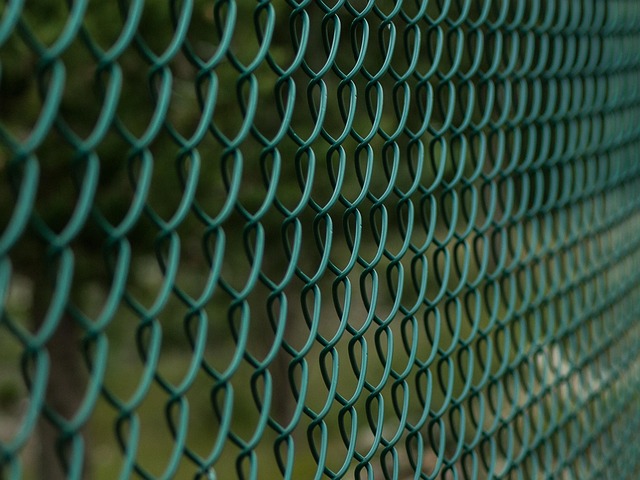New Bedford, MA, boasts a diverse array of ornamental fencing styles that reflect its rich history and evolving aesthetics. From the Victorian opulence of intricate ironwork to the classic charm of Colonial-era designs, the city’s fences tell tales of times past. This article explores these varied styles, delving into traditional forms, modern innovations, and the impact of local materials. We also examine how fencing enhances property value and contributes to New Bedford’s unique character.
- Exploring New Bedford's Fencings: A Historical Overview
- Traditional Styles: From Victorian to Colonial
- Modern Innovations in Ornamental Fencing Design
- Local Materials: Wood, Metal, and Their Appeal
- Enhancing Property Value: The Impact of Fencing Aesthetics
Exploring New Bedford's Fencings: A Historical Overview
New Bedford, MA, boasts a rich architectural heritage, and ornamental fencing plays a distinctive role in shaping its historical landscape. Over the years, various styles have graced the city’s residential areas, reflecting changing trends and cultural influences. From the early colonial periods to the Victorian era, each decade has left its mark on the fencing designs.
The city’s oldest structures often feature simple yet elegant wooden fences, reflecting the region’s pragmatic New England roots. As time progressed, the arrival of immigrants brought new aesthetics, leading to the introduction of intricate ironwork and ornate metal fences. The late 19th century saw a surge in Victorian-inspired fencing with elaborate patterns and decorative elements, showcasing the era’s opulence. These historical trends highlight New Bedford’s evolving character, where fencing styles have not only served functional purposes but also contributed to the city’s unique visual identity.
Traditional Styles: From Victorian to Colonial
In New Bedford, traditional fencing styles often reflect the area’s rich historical fabric, with influences from the city’s Victorian and Colonial past. One prominent style is the Victorian iron fence, characterized by intricate, elaborate designs that adorn many of the city’s historic homes. These fences, typically crafted from forged iron, feature floral motifs, curved lines, and delicate scrollwork, adding a touch of elegance and romance to the urban landscape. They were particularly popular during the late 19th century when New Bedford saw a boom in architectural splendor.
Another traditional style that aligns with the Colonial era is the wooden fence. These fences, often made from local hardwoods like cedar or oak, exude a rustic charm and are known for their sturdiness. The Colonial-style wood fence typically features simple, straight lines and can be found surrounding many of the city’s older properties, offering both privacy and aesthetic appeal. This timeless design has stood the test of time, remaining a popular choice for homeowners seeking to preserve the classic New Bedford look.
Modern Innovations in Ornamental Fencing Design
The world of ornamental fencing has seen a significant evolution with modern innovations bringing both aesthetic and functional advancements to New Bedford, MA residents. Designers and manufacturers are continually pushing boundaries, incorporating new materials, techniques, and technologies to create visually stunning and durable fence options. For instance, the rise of aluminum fencing has gained popularity due to its low-maintenance nature, lightweight design, and ability to withstand harsh weather conditions. These fences often feature intricate designs, from classic geometric patterns to modern abstract shapes, adding a touch of contemporary elegance to any property.
Moreover, the integration of advanced manufacturing processes allows for more complex and precise cuts, enabling the creation of elaborate ironwork and twist-and-turn designs that were once labor-intensive. Wrought iron, known for its timeless beauty, is often crafted with intricate details, adding a hint of vintage charm to residential areas. Additionally, innovative lighting systems integrated into fence panels are transforming outdoor spaces, providing both security and a unique aesthetic touch, especially during the evenings in New Bedford’s charming neighborhoods.
Local Materials: Wood, Metal, and Their Appeal
New Bedford’s ornamental fencing scene boasts a diverse array of styles, often influenced by local materials—wood and metal. The natural beauty of wood offers a warm, inviting aesthetic. Local hardwoods like oak and cedar provide rich colors and textures, adding depth to any fence design. Wood fences are versatile, suiting both traditional and contemporary landscapes, and can be crafted into intricate patterns or kept simple for a subtle touch.
Metal, another prevalent choice, brings a modern edge and durability to New Bedford’s fencing. Local metalworkers often incorporate steel and aluminum, treating them with unique finishes—from sleek, polished silver to rustic, weathered tones. Metal fences exude strength and security while allowing light to filter through, creating an open, airy feel for the surrounding space. Their longevity and low maintenance make them a preferred choice for many residents.
Enhancing Property Value: The Impact of Fencing Aesthetics
In New Bedford, MA, ornamental fencing styles play a significant role in enhancing property value. Beyond providing security and defining boundaries, aesthetically pleasing fences act as visual anchors that significantly influence how a home or business is perceived by passersby and potential buyers. A well-designed fence can instantly elevate the curb appeal of a property, creating an inviting atmosphere that encourages visitors and boosts overall first impressions.
The impact of fencing aesthetics extends beyond immediate observation. Property owners who invest in ornamental fences signal their commitment to maintaining and enhancing their surroundings. This attention to detail reflects positively on the property’s value, making it more attractive to potential buyers or tenants. Moreover, these visually appealing fences can contribute to a sense of community and neighborhood pride, fostering a desirable living environment for everyone.
